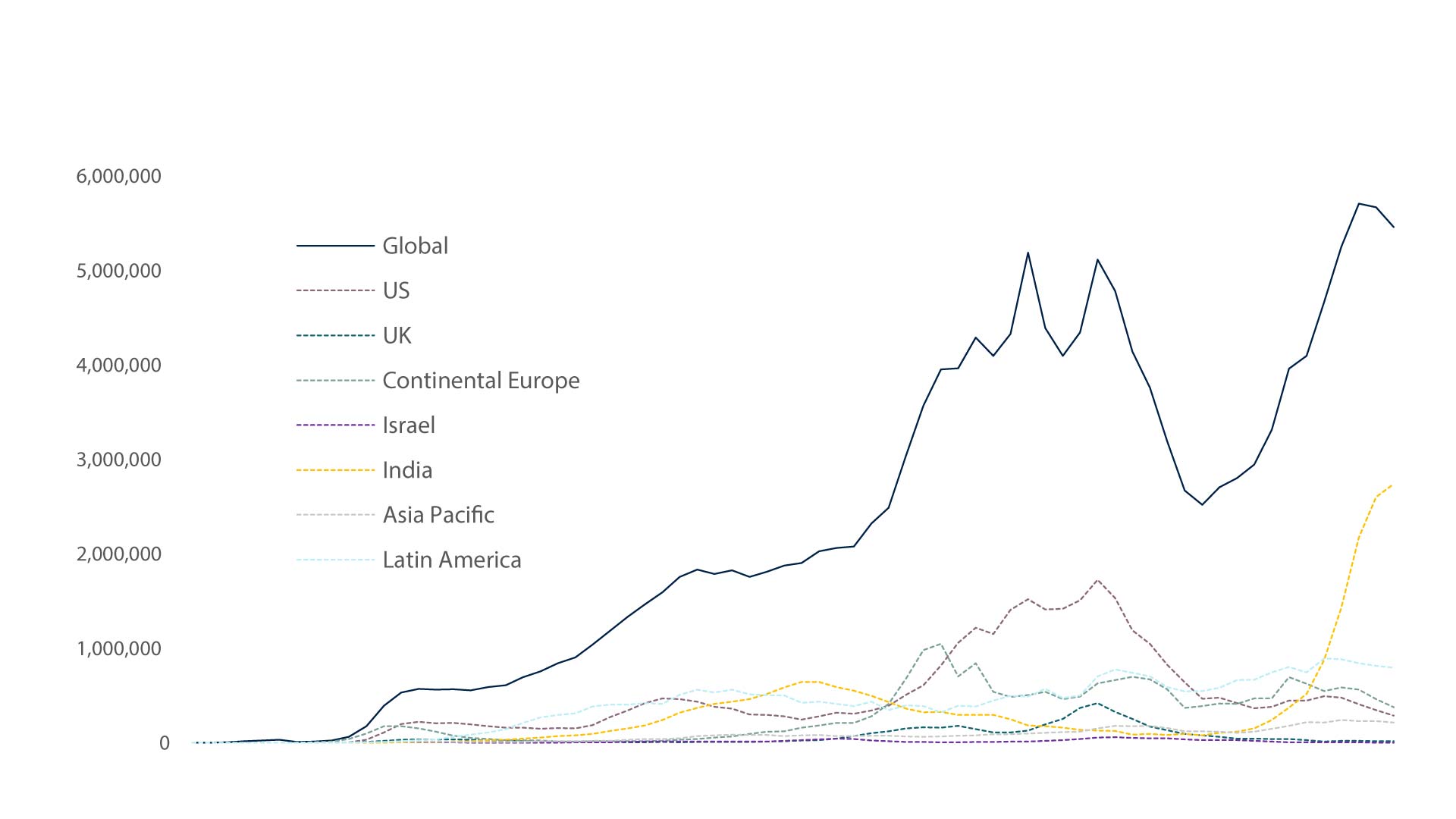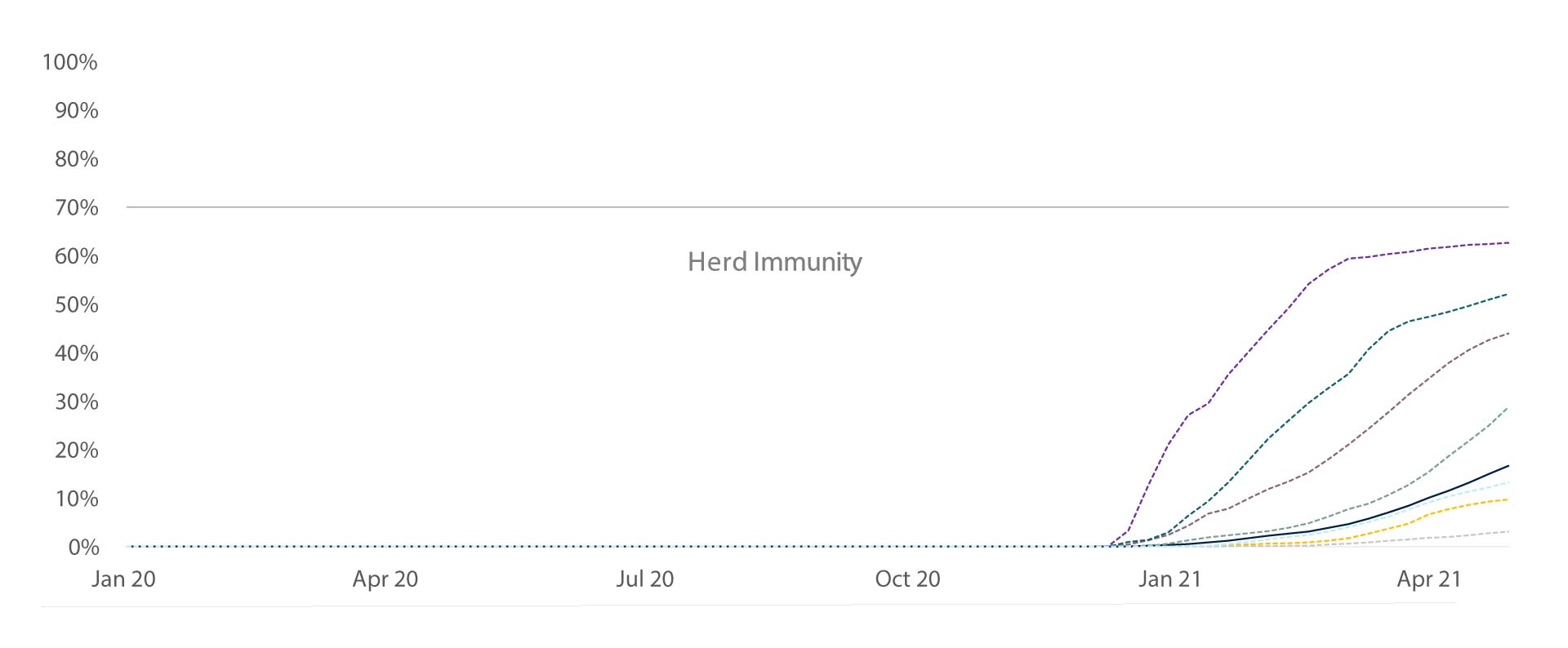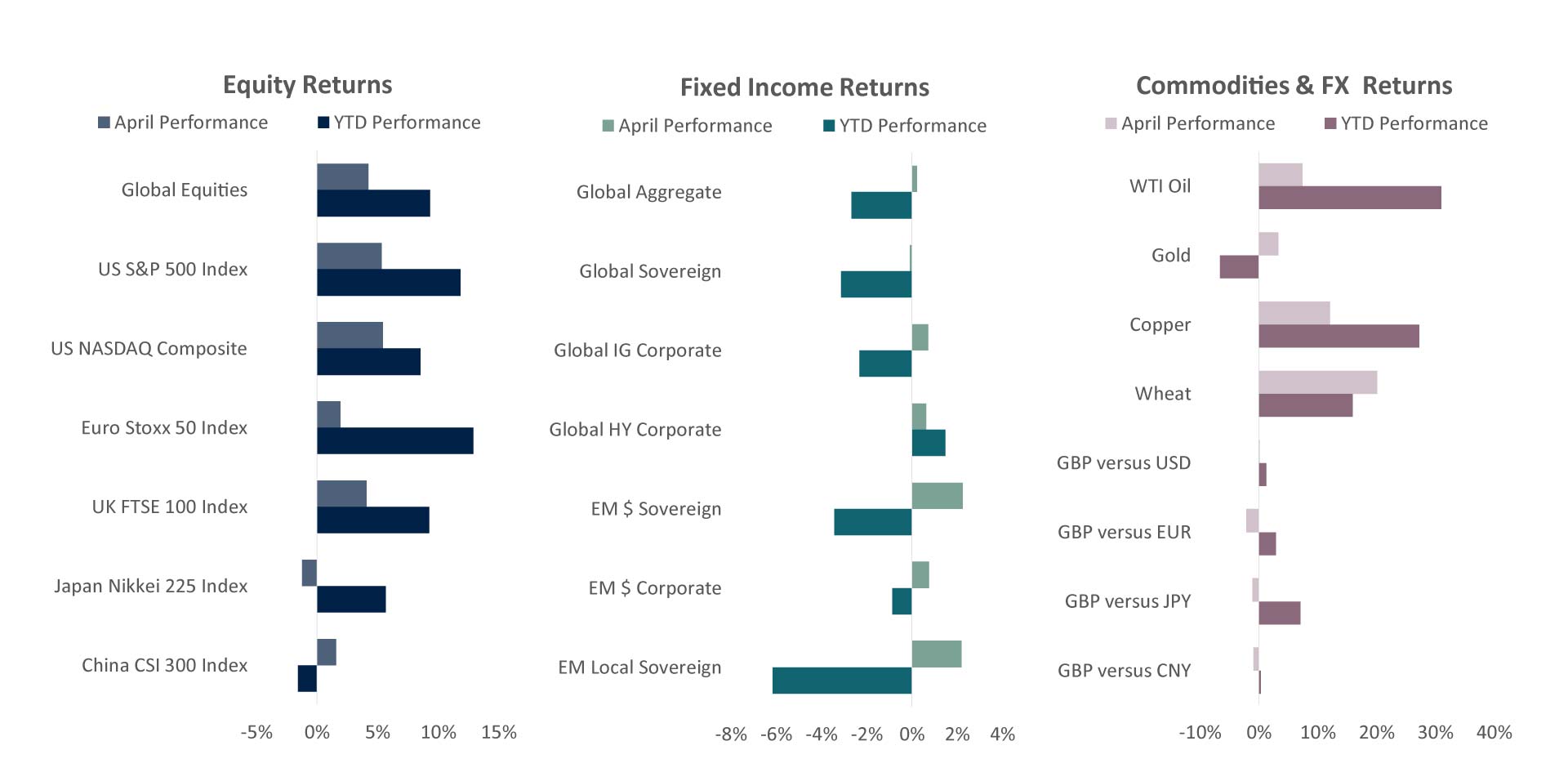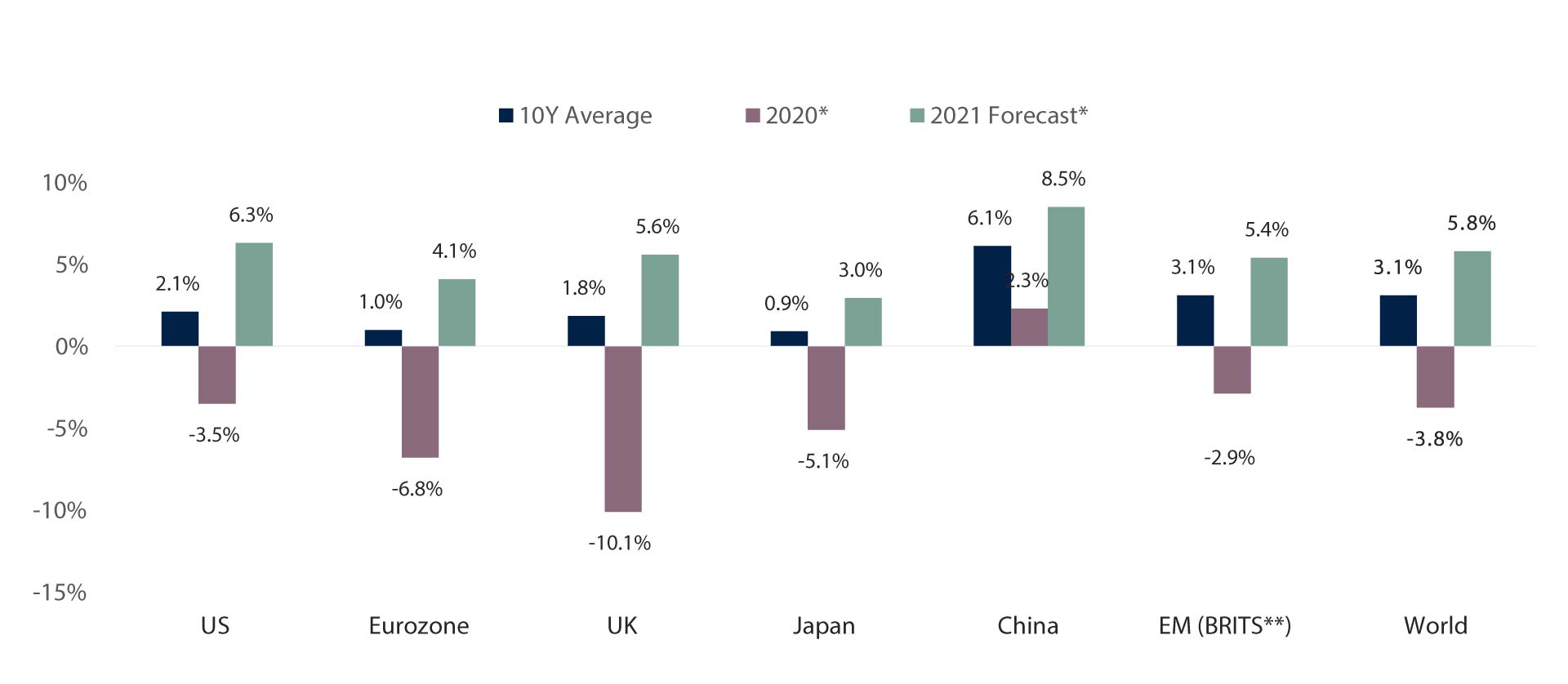We must help India in order to end the global pandemic
The financial markets are awash with optimism. The global covid-19 vaccination push has been quicker than expected with some countries on track to meet herd immunity levels by the end of the summer.
The US economy is the largest in the world and is expected to expand by 6.3% in 2021, nearly three times its long-term growth rate and boosted by significant fiscal and monetary stimulus, whilst the Chinese economy is the second largest in the world and is expected to grow by 8.5% this year.
Meanwhile, much of continental Europe is now loosening lockdown restrictions and so a more sustained recovery for this important global economic bloc should start this summer. So why have reported global Covid-19 cases made new highs in April near 6,000,000 infections per week?
The worrying fact is most of the world’s population are still not vaccinated and because the virus threat in key global economies is perceived to be low, financial markets are unperturbed. Tragically, about half of all global cases are now coming from India, where the latest humanitarian crisis is unfolding, hospitals nationwide are overwhelmed and the virus is out of control. The problem facing the rest of the world is that India is now also the global hotspot for new covid-19 variants, over the last two months the risk has doubled of a more deadly transmissible variant emerging that is immune to the world’s current vaccination programme.
The world must come together to help India with medical aid and vaccines, otherwise the global pandemic could potentially be far from over.
Weekly Reported COVID-19 Cases

First Vaccinations Administered, Percentage of Population

Source: Signia Wealth, Bloomberg, Worldometer. Data as at 30/04/2021.
Global: Aggregate of the following country and regional blocs. Continental Europe: Belgium, Denmark, France, Germany, Italy, Portugal, Spain, Switzerland. Asia Pacific ex India: Indonesia, Japan, New Zealand, Malaysia, Philippines, Singapore, South Korea, Thailand. Latin America: Argentina, Brazil, Bolivia, Chile, Ecuador, Mexico, Peru, Venezuela.

Source: Signia Wealth, Bloomberg. Data as at 30/04/2021. Global Equities: iShares MSCI ACWI ETF; Global Aggregate: Vanguard Global Bond Index GBP Hedged Fund; Global Sovereign: Xtrackers Global Government Bond GBP Hedged ETF; Global IG Corporate: Vanguard Global Corporate Bond Index GBP Hedged Fund; Global HY Corporate: iShares Global High Yield Corporate Bond GBP Hedged ETF; EM$ Sovereign: iShares J.P. Morgan USD EM Bond ETF; EM$ Corporate: iShares J.P. Morgan USD EM Corporate Bond ETF; EM Local Sovereign: iShares J.P. Morgan EM Local Government Bond ETF.
Equities
• US equities achieved the highest returns during April, as strong corporate earnings and lower bond yields helped to buoy sentiment, especially in the technology sector.
• UK equities were the next strongest, however European equities lagged as rising coronavirus cases around the world dampened sentiment for the globally-exposed bloc.
• Japanese markets fell during the month due to their greater cyclical content, however Chinese equities stabilised somewhat after a poor few months to record a small positive gain.

Jack Rawcliffe
Fixed Income
• The global sovereign index was flat on the month with mixed performances on a regional basis as US treasuries gained whilst save haven European sovereigns declined as the region prepared to exit restrictive covid lockdown measures.
• Both global investment grade and high yield credit gained in April as the former benefitted from a fall in US yields and the latter saw additional support in the form of higher commodity prices and investors’ continued hunt for yield.
• All major emerging market debt sub-indices generated positive performance this month with notable performance from hard currency and local currency sovereigns, both sectors buoyed by the respite in rising US yields and a falling US dollar which supported EM currencies on a relative basis.

Grégoire Sharma
Commodities & FX
• Gold posted its first positive month in 2021 as it rose over 3.6%, this was as a result of both the US Dollar and US Treasury yields stabilising.
• Concerns surrounding inflation escalated further throughout April as the likes of WTI Crude Oil surged nearly 7.5%, Copper 11.7%, and Lumbar prices rising a staggering 48.7%.
• Wall Street’s fear gauge “The VIX” dropped to its lowest since before the pandemic as investor optimism rose on the back of vaccination rollouts and the re-opening of the US economy.

Harry Elliman
World Economic Growth Rates (Real GDP)

*Bloomberg Contributor Composite Forecasts, except IMF WEO for India. **Brazil, Russia, India, Taiwan, South Korea. Source: Signia Wealth, Bloomberg, IMF. Data as at 30/04/2021
Choose a Service to Invest through
United States of America
The US economy is expected to grow in 2021 at its fastest pace since the 1980s as the country’s vaccination programme progresses quickly (although its initial rapid pace slowed in April), pent-up consumer demand and rising economic sentiment from record levels of savings boost consumption, and fiscal impulse from Biden’s multiple trillion-dollar fiscal packages are deployed. The housing market is showing signs of notable strength and momentum.
Eurozone
After a slow start European covid-19 vaccinations are picking up and infection rates are declining, leading to the re-opening of economies this summer. Member countries are now applying for distributions from the European Recovery Fund, and together with continued ECB stimulus support via the Pandemic Emergency Purchase Programme, expectations for a strong economic rebound in the second half of 2021 and beyond are growing. The German Green party is now challenging Angela Merkel’s incumbent CDU/CSU coalition in the polls for elections in September.
United Kingdom
This long British winter has seen stricter national lockdowns reminiscent of the initial Spring 2020 lockdown, but households have used this time and government furlough schemes to strengthen their finances and become net savers in anticipation of a Spring 2021 unlocking following a successful vaccine rollout programme to date. The Bank of England raised its estimate for UK GDP growth in 2021 to 7.25% – above market expectations – up from its prior estimate of 5% in February.
Japan
Japan is struggling to control a third and prolonged coronavirus infection wave ahead of hosting the Summer Olympic Games. Japan has been one of the last G20 countries to start its vaccination programme as it waited for testing results from trials on its own domestic population. Despite substantial policy support, a vaccine-sceptic population may hamper a significant economic rebound in 2021.
China
China was one of only two global economies that avoided an economic recession in 2020 and has already expanded its output beyond pre-pandemic levels (the other country being Taiwan). Chinese economic growth is expected to rebound above its long-term historical growth rate of around 6% to 8.5% this year. Its new five-year economic plan elevates its self-reliance in technology into a national strategic pillar, most likely as a direct result of growing competitive tensions and trade wars with the USA.
Emerging Markets
Emerging economies have found themselves lagging the global vaccine rollout programme with only 1% of the poorest EM populations currently vaccinated. Despite the outlook for a more synchronised global growth backdrop in 2021 as broad economic momentum gathers pace and reflation policies takes hold, key economies in Brazil, India, Russia and Turkey are still fighting elevated covid-19 infection rates, increasing the risk to the spread of new global virus variants.
Important Information
The information set out in this document has been provided for information purposes only and should not be construed as any type of solicitation, offer, or recommendation to acquire or dispose of any investment, engage in any transaction or make use of the services of Signia. Information about prior performance, while a useful tool in evaluating Signia’s investment activities is not indicative of future results and there can be no assurance that Signia will generate results comparable to those previously achieved. Any targeted returns set out in this document are provided as an indicator as to how your investments will be managed by Signia and are not intended to be viewed as a representation of likely performance returns. There can be no assurance that targeted returns will be realised. An estimate of the potential return from an investment is not a guarantee as to the quality of the investment or a representation as to the adequacy of the methodology for estimating returns. The information and opinions enclosed are subject to change without notice and should not be construed as research. No responsibility is accepted to any person for the consequences of any person placing reliance on the content of this document for any purpose. No action has been taken to permit the distribution of this document in any jurisdiction where any such action is required. Such distribution may be restricted in certain jurisdictions and, accordingly, this document does not constitute, and may not be used for the purposes of, an offer or solicitation to any person in any jurisdiction were such offer or solicitation is unlawful. Signia Wealth is authorised and regulated by the Financial Conduct Authority.

